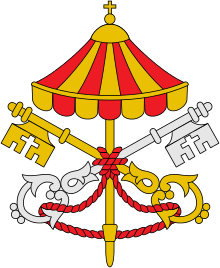This article needs additional citations for verification. (July 2023) |

Sedevacantism is a traditionalist Catholic movement which holds that since the 1958 death of Pius XII the occupiers of the Holy See are not valid popes due to their espousal of one or more heresies and that, for lack of a valid pope, the See of Rome is vacant.[1][2] Sedevacantism owes its origins to the rejection of the theological and disciplinary changes implemented following the Second Vatican Council (1962–1965).
The term sedevacantism is derived from the Latin phrase sede vacante, which means "the chair [of the Bishop of Rome] being vacant".[2][3] The phrase is commonly used to refer specifically to a vacancy of the Holy See which takes place from the Pope's death or renunciation to the election of his successor.
The number of sedevacantists is unknown and difficult to measure; estimates range from tens of thousands to hundreds of thousands.[4] Various fractions of conclavists among sedevacantists have proceeded to end the perceived vacancy in the Holy See by electing their own pope.[5]
- ^ Appleby, R. Scott (1995), Being Right: Conservative Catholics in America, Indiana University Press, p. 257, ISBN 978-0253329226
- ^ a b Marty, Martin E.; Appleby, R. Scott (1994), Fundamentalisms Observed, University of Chicago Press, p. 88, ISBN 978-0226508788
- ^ Neuhaus, Richard John (2007), Catholic Matters: Confusion, Controversy, and the Splendor of Truth, Basic, p. 133, ISBN 978-0465049356
- ^ Collinge, William J. (2012). Historical dictionary of Catholicism (2nd ed.). Lanham, MD: Scarecrow Press. p. 399. ISBN 978-0810857551.
from tens of thousands to hundreds of thousands
- ^ Chryssides, George D. (2012). Historical Dictionary of New Religious Movements (2nd ed.). Scarecrow Press. p. 99. ISBN 978-0810879676.